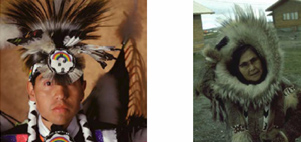|
Native American/Alaskan Education

In 1972 the Indian Education Act created the Federal Office of Indian Education. In
the 1990ís the Indian Nations At-risk Task Force was founded (INATF). Native
American and Alaskan children have a higher drop-out rate, lower educational
attainment rate, higher suicide rate, and the lowest rate of post secondary education
of any group. The Native American At-risk Task Force decided on four priorities for
Native American/Alaskan students to pursue (1) To develop parent based and
culturally, linguistically, and developmentally appropriate early childhood
education; (2) to make the promotion of studentsí tribal language and culture a
responsibility of the school; (3) to train more Native teachers; and (4) to strengthen
tribal and Bureau of Indian Affairs colleges. In 1998 these goals were expanded by
Executive Order 13096 American Indian Alaskan Native Education which was
committed to improving academic performance and lowering drop-out rates. This
order focused on six goals: improve reading and mathematics, increase high school
completion and post secondary attendance rates, reduce the influence of long
standing factors that impede educational performance, such as poverty and
substance abuse, create strong, safe, drug free school environments, improve
science education, and expand the use of educational technology.
>> next topic
::: back to educator home page <<
|
 |
Topics
Learning Styles
Multiple Intelligences
From Assimilation to Multiculturalism
Multicultural Education
Desegregation/Resegregation
Native American/ Alaskan Education
Migrant Students
Immigrant Students
Bilingual Education
Disadvantaged Students
Students with Disabilities
Gender Equity
Summary
|